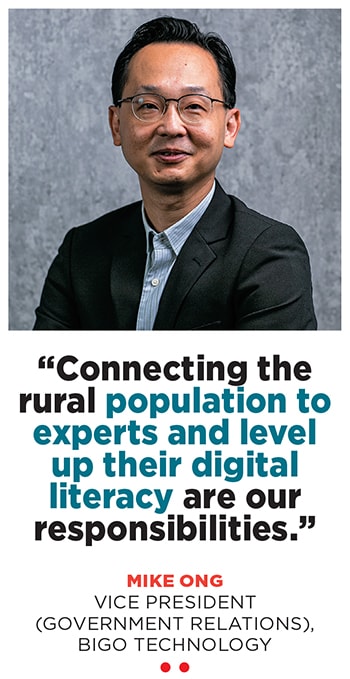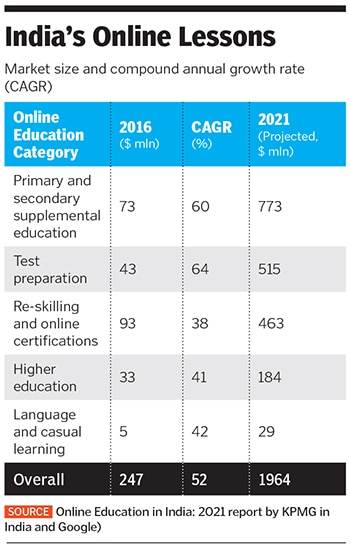
When TikTok becomes your teacher
Students are using apps like TikTok, Telegram and Bigo Live to learn through snappy videos and interactive quizzes. But what is fun might not always be functional
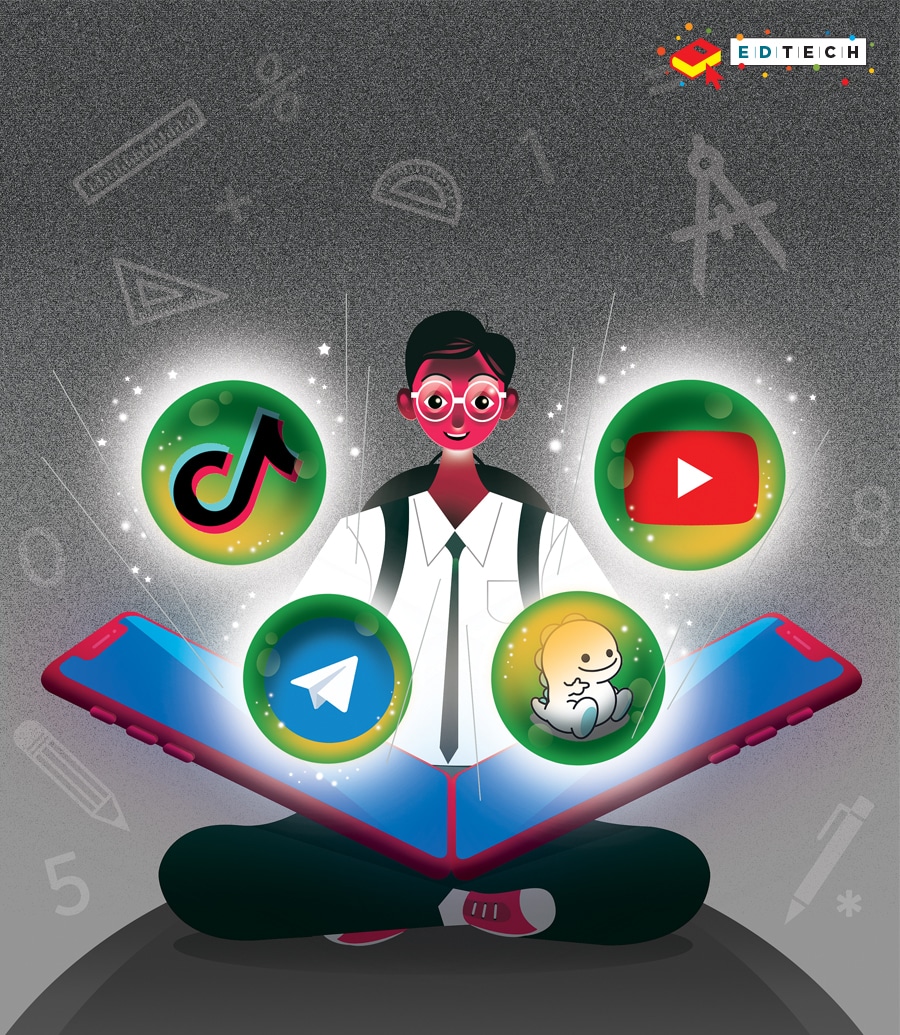 Illustration: Chaitanya Dinesh Surpur
Illustration: Chaitanya Dinesh SurpurThat’s a corolla? Where is a flower’s calyx? If these terms take you back to diagrams in textbooks, you must be older than 25.
Chances are your biology teacher was syllabus-focussed and maybe even boring. Chances also are that your teacher was not dressed à la Shah Rukh Khan in the 2000 film Mohabbatein as part of an elaborate video setup, to teach you what a corolla is in a 60-second video on TikTok.
But Ashhar Firdausi, a biology teacher, is part of a new breed of educators who is also part-actor. In one video, he is against a lush-green backdrop, with a Khan-style sweater over his shoulders, holding a single red rose. He appears deeply engaged in peeling back one petal at a time, to conclue if “she loves me” or “she loves me not”. Once he’s got your attention, Firdausi holds up the rose and points out the flower’s corolla (and its calyx), as digital graphics of autumn leaves drift across the screen (in a nod to the film, of course).
In another video, Firdausi is inside what looks like the sea, with computer-generated images of fish swimming around. How do you tell if a fish has bones or cartilages by just looking at it? Firdausi explains with the help of animation, in just under a minute.
Firdausi is an associate professor at edtech company Toppr, which has a learning app for students from classes 5 to 12 and multiple entrance exams. In June, social media platform TikTok—owned by Chinese internet giant ByteDance and famous for its short videos—rolled out #EduTok, an e-learning programme for India, for which it has edtech partners such as Toppr.
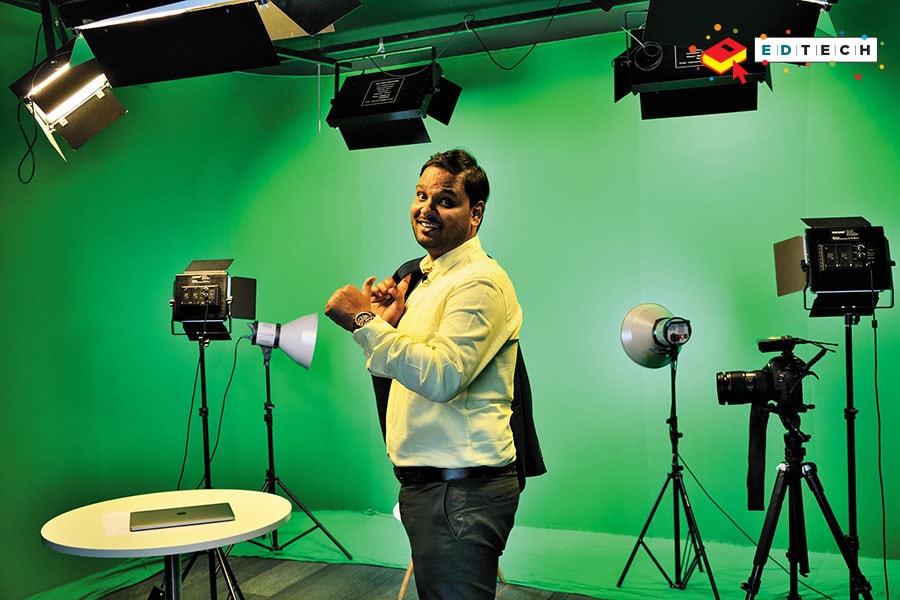 Ashhar Firdausi enacts one of his videos for Toppr
Ashhar Firdausi enacts one of his videos for TopprImage: P Anil Kumar for Forbes India
This came after the Madras High Court banned TikTok in April 2019, claiming it spread child pornography. India is one of TikTok’s largest markets, and the platform has been actively working on cleaning up its image, though the ban was soon lifted.
Is the #EduTok bet paying off? It could, and could signal the future of education too.
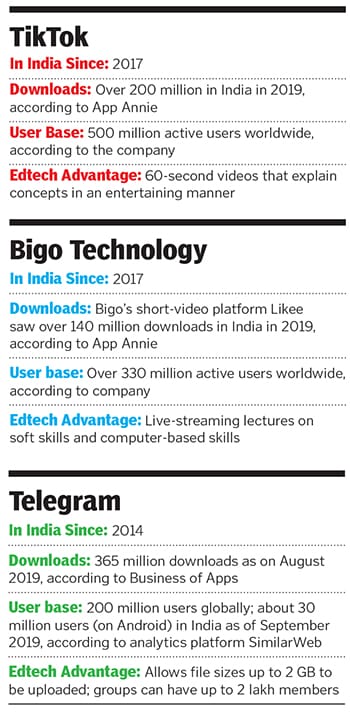
For instance, Jyoti Tomar, 27, has a master’s degree in computer science from the University of Bhopal. When her family did not let her relocate to Pune for a job, she started teaching at a coaching class at her hometown Laxmi Nagar, in Uttar Pradesh. She then quit to prepare for the banking services entrance exam. Instead of signing up at a coaching centre, she registered herself on edtech platform Gradeup (an #EduTok partner), which offers her “short, to-the-point content without ads, unlike YouTube”. She also joined TikTok to prepare for her test.
“The exam includes logical reasoning, quantitative analysis and English vocabulary. The study material on Gradeup and TikTok is tailored for that,” she explains. While Gradeup offers quizzes, Tomar also found tips and tricks to solve math problems quickly on TikTok.
“Being on TikTok does not require heavy concentration and the interactive format is such that we can learn at any time, even when we are travelling. Every day, I get to learn at least seven to eight new words of English vocabulary,” she says.
Tomar believes that given the information overload and various distractions, edtech apps streamline education, while platforms like TikTok add an element of fun. “If we are moving toward 5G in telecom, why stick to just books in education? We have to speed up there too.”
For an entire generation of students, studying is becoming less about textbooks and more about smartphones. India’s online education market is set to grow to $1.96 billion with around 9.6 million users in 2021, up from $247 million and about 1.6 million users in 2016, according to Online Education in India: 2021, a report by KPMG in India, and Google.
To keep students hooked on to their respective platforms, education providers are experimenting with test prep and lessons on social media channels—not just TikTok, but also platforms like Telegram and Bigo Live—that host snappy videos, bite-sized formats, real-time online group studies, interactive quizzes and live streaming. This is a step further from long videos or image-based learning that were popular on YouTube and Facebook respectively. This is edtech 2.0, if you will.
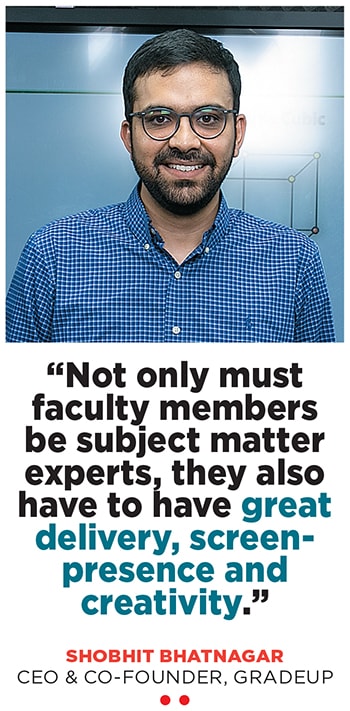
These digital platforms have millions of users in India, with education content creators having hundreds of thousands of followers. Telegram, the UK-based encrypted messaging app founded in 2013, has about 30 million active users (on Android) in India as of September 2019, according to analytics platform SimilarWeb. India accounted for 44 percent, or 323 million, of TikTok’s app downloads in 2019, according to data analytics firm App Annie.
Education vs Engagement
For a generation hooked to content, how do you strike a balance between education and entertainment?
“It’s evolving and we’re figuring it out,” says Shobhit Bhatnagar, CEO and co-founder of Gradeup. “Not only must faculty members be subject matter experts, but they also have to have great delivery, screen-presence and creativity.”
Teachers go through the equivalent of auditions at the time of hiring, giving demonstrative recorded lectures. “We’re working on building technology to help us here too,” adds Bhatnagar. “For example, the system should be able to quantify certain paramenters: The number of times eye-contact is made; how many times teachers ask interactive questions like ‘Samajh aaya?’ [Do you understand?]”
“The difference here is that in a regular classroom, students have to stick around. Here, if they lose interest, they will open another tab, and head to another distraction,” he adds.
To make sure they maintain the balance between education and engagement, edtech startups are investing in full-stack studios, equipment and media trainers, who have experience with TV shows and news.
Arshad Shahid, creative head of Toppr says a lot of their success is credited to this media team. It took them over two to three months of trial and error to understand what really clicks with students: Videos that explain concepts with informal language, interactive graphics, and references to films and pop culture. “Earlier, we would spend 2 hours for one video. Now, after the script is ready, we can shoot within 15 minutes,” says Shahid.
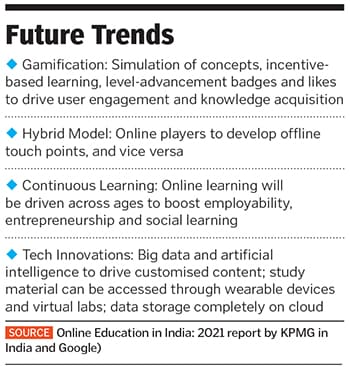
According to Rajshekhar Ratrey, Toppr’s vice president, product and knowledge, the company has a team of 80 that works on videos, and a sub-section of them works on adapting them for social media.
“It is competitive and creates a lot of pressure on teachers. The media trainers see how teachers are performing on camera and train them on how to act, how to engage and create interaction,” says Bhatnagar, whose Gradeup has four TikTok channels and eight Telegram groups, each with 10,000 to 15,000 followers.
Bhopal-based Pushpendra Dhakad, who runs a coaching class called Fly High Academy, doesn’t have as sophisticated a set-up, but has 2 million likes on TikTok, and more than 350,000 followers. He is an #EduTok creator, but his target audience is not just students. “I signed up on TikTok to take educational content farther. Homemakers, security guards, vegetable vendors, shopkeepers watch my videos, and I want to teach them basic, conversational English,” he says. “I teach common English phrases, pronunciation, the difference between American and British English, and so on.”
Similarly, Singapore-based live-streaming network Bigo Live, made a $100 million investment in India last year, and is focussed on India’s rural communities. “Last year, we hired over 200 qualified teachers who were able to teach English and soft skills such as Excel, PowerPoint and elementary Photoshop,” says Mike Ong, vice president (government relations), Bigo Technology. “We have significantly grown our strength in India; from 200-odd employees last year to 1,000 now.”
(This story appears in the 28 February, 2020 issue of Forbes India. To visit our Archives, click here.)

